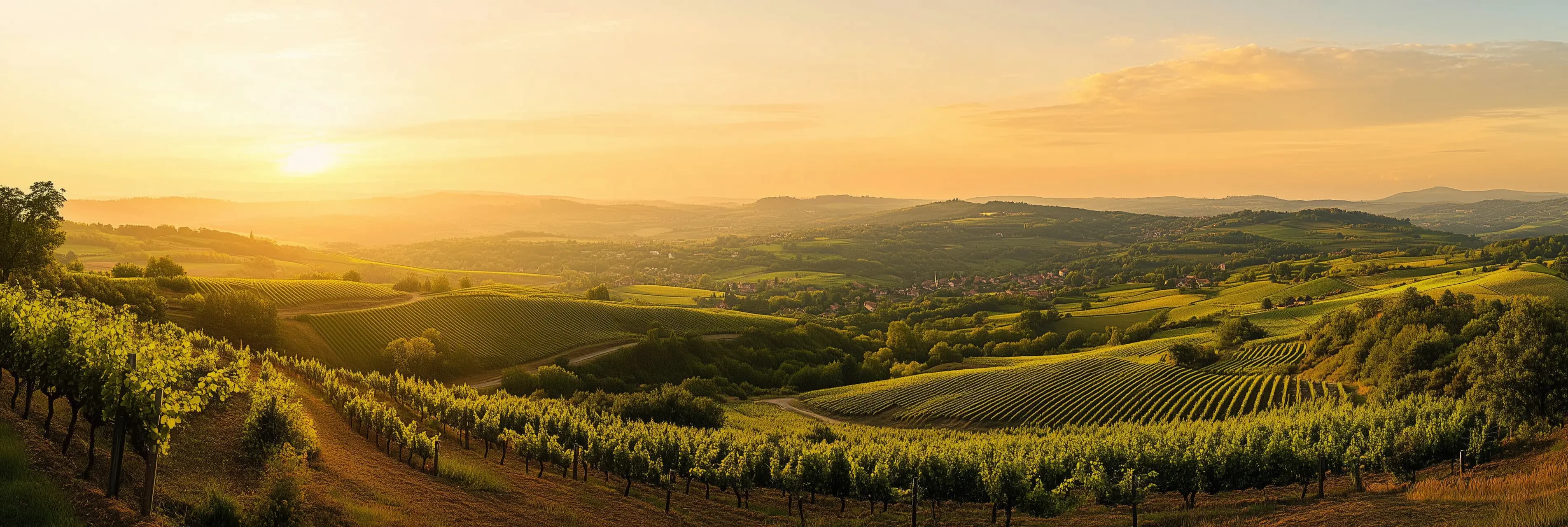Inside the bubble: the bold art of carbonic maceration in Beaujolais
Beaujolais wines are celebrated for their bright, fruity character and vibrant personality. What sets them apart from other French wines is not just the Gamay grape, but a winemaking technique called carbonic maceration. This process, largely associated with Beaujolais, plays a crucial role in developing the fresh, aromatic qualities that define these wines. In this article, we’ll explore the art of carbonic maceration, how it works, and why it gives Beaujolais wines their signature style.
What is carbonic maceration?
At its core, carbonic maceration is a fermentation method that allows whole, uncrushed grapes to ferment in a carbon dioxide-rich environment.
This technique is quite different from traditional winemaking, where grapes are typically crushed before fermentation begins.
Here’s a step-by-step breakdown of how carbonic maceration works:
- Whole Grapes in a Sealed Tank: Grapes are placed whole into a sealed fermentation tank, with no crushing or pressing involved. Carbon dioxide is pumped into the tank, creating an anaerobic (oxygen-free) environment.
- Intracellular Fermentation: In this oxygen-free environment, the grapes begin to ferment from the inside. Enzymes inside the grape cells start to convert sugars into alcohol without the need for yeast at this stage.
- Crushing and Pressing: After several days of intracellular fermentation, the grapes begin to burst under the pressure of the carbon dioxide and their own internal processes. At this point, the grapes are pressed, and the remaining juice is fermented using traditional yeast fermentation.
The science behind the style
Carbonic maceration is responsible for many of the key qualities we associate with Beaujolais wines, especially Beaujolais Nouveau. **This method limits the extraction of harsh tannins from the grape skins and seeds, leading to lighter, fruitier wines with a soft mouthfeel. ** Here are the specific effects of carbonic maceration on the final product:
- Aromatic Profile: Wines made through carbonic maceration tend to have intense aromas of red fruit—think raspberry, strawberry, cherry, and even banana or bubblegum notes in some cases. These come from the rapid fermentation process that emphasizes fruity esters.
- Tannin Structure: Because the grapes aren’t crushed until later in the process, there is less contact between the juice and the skins. This results in lower tannin levels, giving the wine a softer, more approachable feel.
- Color: Carbonic maceration preserves the vivid, bright colors of the wine, often resulting in striking shades of ruby red or violet.
- Freshness: The method also enhances the wine’s freshness and drinkability. Beaujolais wines are often consumed young, and carbonic maceration allows them to be ready for consumption soon after production.
Carbonic maceration and Beaujolais Nouveau
One of the most famous applications of carbonic maceration is in the production of Beaujolais Nouveau. This wine is released each year on the third Thursday of November and is meant to be enjoyed immediately, offering a fun, festive introduction to the latest vintage. Beaujolais Nouveau is all about celebrating the youthful, fresh fruitiness of the Gamay grape, and carbonic maceration plays a critical role in achieving this style. The wine is typically light, bright, and low in tannins, making it an ideal wine for early consumption and an easy match for casual meals.
Key characteristics of Beaujolais Nouveau:
- Flavor Profile: Explosive red fruit flavors, often with notes of banana and bubblegum.
- Aging Potential: Beaujolais Nouveau is not meant for aging—most bottles should be consumed within a few months of release.
- Cultural Significance: The annual release of Beaujolais Nouveau is a major event in France and beyond, with celebrations marking the occasion around the world.
Carbonic maceration in Cru Beaujolais
While Beaujolais Nouveau may be the most well-known example of carbonic maceration, this technique is also used to varying degrees in Cru Beaujolais wines. The ten Crus of Beaujolais—villages like Morgon, Fleurie, and Moulin-à-Vent—produce more structured and age-worthy wines, and winemakers here often use a combination of carbonic maceration and traditional fermentation. In Cru Beaujolais, the carbonic maceration process is typically shorter, and winemakers may crush part of the harvest before fermentation to achieve a more balanced wine. This results in wines that still have that characteristic fruit-forwardness of Beaujolais, but with more depth, complexity, and the ability to age gracefully.
Examples of carbonic maceration in Cru Beaujolais:
- Morgon: Known for producing fuller-bodied wines, Morgon often employs partial carbonic maceration to balance fruitiness with structure and earthiness.
- Fleurie: In contrast, Fleurie wines are typically lighter and more floral, with carbonic maceration enhancing their elegance and freshness.
The role of carbonic maceration beyond Beaujolais
While Beaujolais is undoubtedly the heartland of carbonic maceration, the technique is not exclusive to this region.
Winemakers around the world, particularly those who focus on producing light, fruit-driven wines, have adopted carbonic maceration to achieve similar results. Regions in Spain, Italy, and even the United States have experimented with this method, often using varieties like Grenache or Zinfandel to produce wines with a lively, fruit-forward character.
Carbonic maceration is more than just a winemaking technique—it’s an essential part of what makes Beaujolais wines so distinctive. By emphasizing fruitiness, minimizing tannins, and producing wines that are bright, fresh, and easy to drink, carbonic maceration allows the Gamay grape to shine in all its glory. Whether you’re enjoying a bottle of Beaujolais Nouveau or a more complex Cru wine, the magic of carbonic maceration is what gives these wines their unique charm and drinkability.

